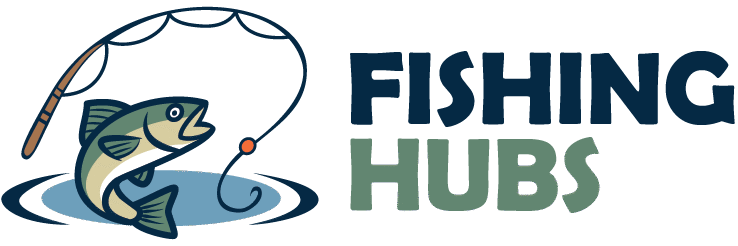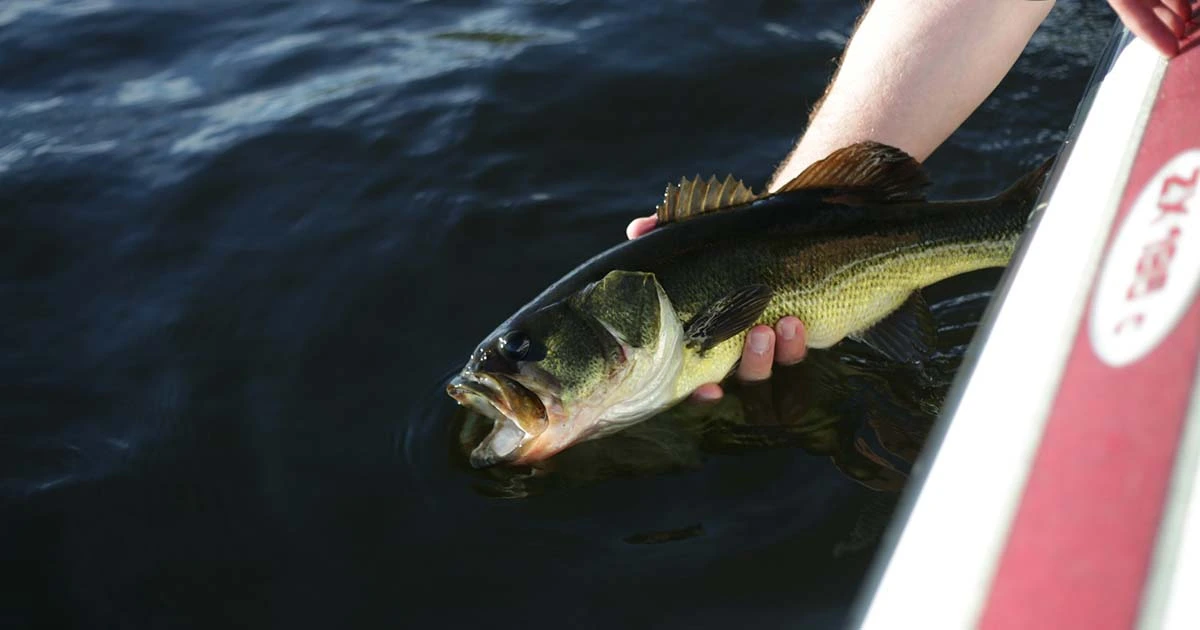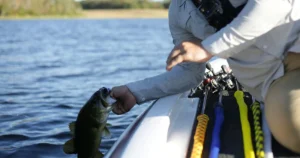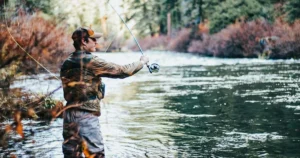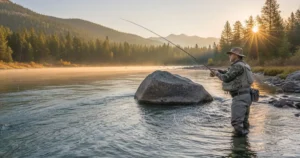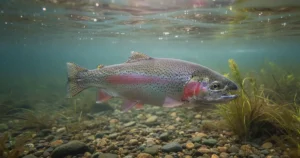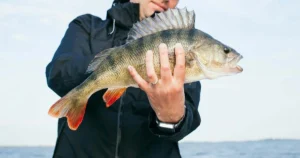Shore Fishing for Bass: Tips to Catch More from the Bank
Table of Contents
Are you an avid angler looking to improve your bass fishing game without the need for a boat? Shore fishing offers a fantastic opportunity to reel in impressive bass, and with the right techniques, you can significantly increase your catch rate. This comprehensive how-to guide will equip you with the knowledge and strategies you need to master bass fishing how to from the bank, helping you understand how to catch bass more consistently.
Understanding Bass Behavior from Shore
Before you even cast your line, understanding bass behavior is crucial for successful shore fishing. Bass are predatory fish, and their movements and feeding patterns are heavily influenced by factors like water temperature, cover, and available forage. When bass fishing on a lake from the shore, you’re looking for areas where bass feel secure and have access to ambush points.
Identifying Productive Shoreline Areas
Not all shorelines are created equal when it comes to bass fishing. You want to focus your efforts on areas that offer bass protection and food.
- Structure and Cover: Look for natural and artificial structures. This includes fallen trees, submerged rocks, docks, weed beds, and even bridge pilings. These provide excellent ambush points for bass.
- Depth Changes: Bass often congregate where there are sudden changes in depth, such as drop-offs or humps. These areas can act as highways for bass moving between shallow feeding grounds and deeper, cooler water.
- Inflow and Outflow: Rivers, streams, or even culverts that feed into a lake or pond can be bass magnets. These areas often bring in baitfish and create current, which bass love.
- Shady Spots: Especially on sunny days, bass will seek out shade to escape the direct sunlight. Overhanging trees, tall reeds, or even the shade cast by a dock can hold bass.
Seasonal Considerations for Shore Fishing
The time of year significantly impacts where and how bass will be holding near the shore.
- Spring: During the pre-spawn and spawn, bass move into shallow, warmer waters to reproduce. This is an excellent time for shore fishing, as bass are often very aggressive and focused on protecting their nests. Look for shallow coves and protected bays.
- Summer: As water temperatures rise, bass may move to deeper, cooler water during the day, but they will still visit shallower areas during low-light conditions (dawn, dusk) or when there’s an abundance of baitfish. Focus on shaded areas, deeper drop-offs near the bank, and areas with good current.
- Fall: Bass become highly active in the fall as they feed heavily in preparation for winter. They will often be found near baitfish schools in both shallow and deeper waters. This can be a fantastic time for aggressive presentations.
- Winter: Bass activity slows considerably in winter. They tend to hold in deeper, more stable water. Your fishing tips for bass fishing in winter from shore should focus on slower presentations and targeting deep drop-offs.
Essential Gear for Shore Fishing Success
You don’t need a boatload of expensive gear to be successful at shore fishing. A few key items will get you started.
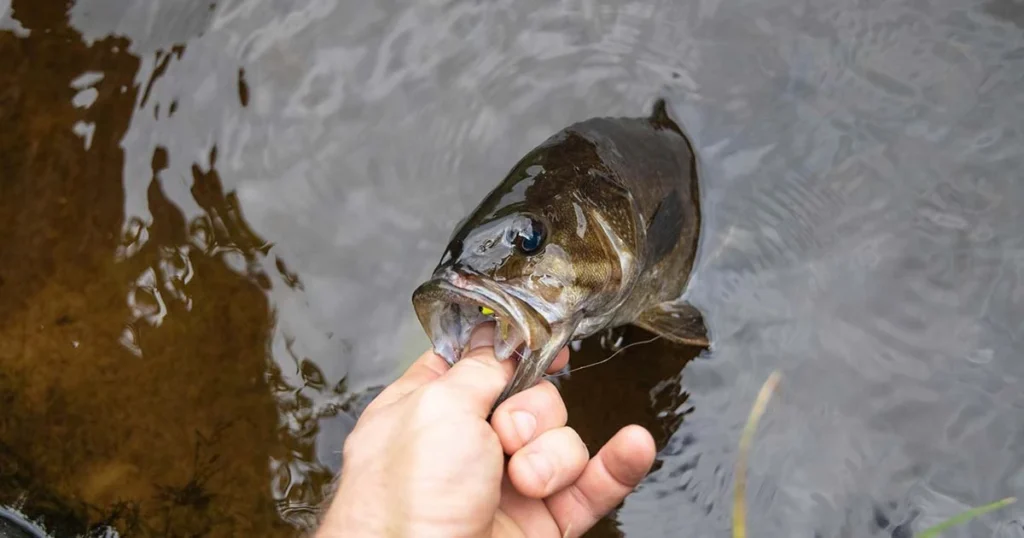
- Rod and Reel: A medium to medium-heavy spinning or baitcasting combo, 6’6″ to 7’6″ in length, is a good all-around choice. It provides the versatility to cast a variety of lures and handle different bass sizes.
- Line: Monofilament, fluorocarbon, or braided line all have their advantages.
- Monofilament is a good all-around choice, forgiving, and easy to cast.
- Fluorocarbon is nearly invisible underwater and offers good sensitivity.
- Braided line offers incredible strength and sensitivity, making it ideal for fishing in heavy cover. Consider a 10-15 lb test for most shore fishing applications.
- Lures: A diverse selection of lures will increase your chances.
- Soft Plastics: Senkos, worms, creature baits, and swimbaits are incredibly versatile and effective. Wacky rigging a Senko or Texas rigging a worm are great techniques.
- Crankbaits: Square bills, lipless crankbaits, and deep-diving crankbaits are excellent for covering water and mimicking baitfish.
- Spinnerbaits and Chatterbaits: These lures create a lot of vibration and flash, attracting bass from a distance, especially in stained water.
- Topwater Lures: Poppers, walk-the-dog baits, and frogs are incredibly exciting for surface strikes, particularly in low-light conditions or over weed beds.
- Terminal Tackle: Hooks (EWG, worm hooks), weights (bullet weights, drop shot weights), swivels, and leader material are all essential.
- Pliers/Forceps: For unhooking fish safely and efficiently.
- Scissors/Line Clippers: For quick and clean line cuts.
- Net: A small, portable landing net can be invaluable for landing larger bass, especially when fishing from an elevated bank.
- Tackle Box/Bag: A comfortable way to carry and organize your lures and terminal tackle. A small backpack or shoulder bag works well for mobile shore fishing.
- Polarized Sunglasses: Crucial for spotting underwater structure, cover, and even cruising bass.
- Hat and Sunscreen: Protect yourself from the elements.
Mastering Shore Fishing Techniques
Now that you have your gear, let’s dive into the techniques that will help you how to catch bass from the bank.
Lure Presentation and Retrieval
The way you present and retrieve your lure can make all the difference.
- Vary Your Retrieve: Don’t just reel in at a steady pace. Experiment with different speeds, pauses, twitches, and jerks to mimic injured baitfish or provoke a strike. This is a fundamental fishing tip for bass fishing.
- “Fan Casting”: Cast your lure to different angles, covering as much water as possible from your position. Start by casting parallel to the bank, then progressively cast further out in a fan-like pattern.
- Targeting Cover: When you spot cover, make precise casts to it. Bass often hold tight to structure, so accuracy is key.
- Working the Bottom: Many bass forage on the bottom. Use lures like jigs, Texas-rigged worms, or drop shots to effectively present your bait near the lakebed.
Effective Techniques for Different Lures
- Soft Plastics (e.g., Senko):
- Wacky Rig: Hook the Senko through the middle. Cast it out and let it sink slowly on a slack line. The ends will wiggle tantalizingly as it falls. Twitch it occasionally.
- Texas Rig: Rig a worm or creature bait weedless with a bullet weight. Cast it into cover and slowly drag, hop, or twitch it along the bottom.
- Crankbaits: Cast them out and reel them in at a steady pace, allowing them to dive to their advertised depth. Deflect them off submerged structure to trigger reaction strikes.
- Spinnerbaits/Chatterbaits: Retrieve them at a moderate pace, allowing the blades to spin and vibrate. Vary your retrieve with pauses and surges.
- Topwater Lures: Cast near cover or in open water during low-light. Work poppers with a “pop-pause” retrieve, and walk-the-dog baits with a rhythmic side-to-side motion.
Advanced Shore Fishing Strategies
To truly excel at bass fishing on a lake from the bank, consider these advanced strategies.
- Stealth and Approach: Bass are wary. Approach the bank quietly, avoid casting a large shadow over the water, and wear natural colors. If you spook a fish, you might miss an opportunity.
- Reading the Water: Pay attention to ripples, current, baitfish activity, and even the presence of other anglers. These clues can tell you where bass might be holding or feeding.
- Focus on Transition Zones: Bass love areas where two different types of cover or depth meet. For example, where a weed line meets open water, or where a rocky bank transitions into a sandy one.
- Vary Your Depths: If you’re not getting bites, try fishing at different depths. If you’re using a shallow-running lure, switch to something that gets deeper, or vice versa.
- Don’t Be Afraid to Move: If a spot isn’t producing after a reasonable amount of time, move to a new location. Shore fishing offers the flexibility to explore different areas along the bank.
- Match the Hatch: Observe what baitfish are present in the water and try to use lures that mimic their size, color, and action.
- Experiment with Colors: While natural colors are often a good starting point, sometimes a bright, unnatural color can trigger a reaction strike, especially in stained or murky water.
“The essence of successful bass fishing from shore lies in your ability to adapt, observe, and understand the subtle nuances of the aquatic environment around you.”
Essential Fishing Tips for Bass Fishing from the Bank
Here are some quick, actionable tips to keep in mind on your next shore fishing adventure:
- Start Small: If you’re new to a body of water, begin with smaller, less intrusive lures to gauge bass activity before moving to larger, more aggressive presentations.
- Pay Attention to Weather: Fronts, sudden temperature changes, and even cloud cover can significantly impact bass behavior. Adjust your strategy accordingly.
- Learn to Tie Knots: Strong, reliable knots are crucial. Practice tying a Palomar knot, improved clinch knot, and a uni knot.
- Stay Persistent: Fishing requires patience. Don’t get discouraged if you’re not catching fish immediately. Keep trying different lures and techniques.
- Be Mindful of Regulations: Always be aware of local fishing regulations, including catch limits, size restrictions, and licensing requirements.
- Practice Catch and Release: If you’re not keeping fish for consumption, practice proper catch and release techniques to ensure the health of the bass population.
Key Takeaways for Shore Fishing Success:
- Location, Location, Location: Focus on areas with structure, cover, depth changes, and current.
- Adapt to Seasons: Adjust your approach based on bass behavior throughout the year.
- Gear Smart, Not Hard: Equip yourself with essential, versatile gear.
- Master Lure Presentation: Vary your retrieve and be precise with your casts.
- Embrace Mobility: Don’t be afraid to move and explore different spots along the bank.
- Observe and Adapt: Pay attention to the water and adjust your tactics based on what you’re seeing.
Conclusion
Shore fishing for bass offers a rewarding and accessible way to enjoy the thrill of the catch. By understanding bass behavior, equipping yourself with the right gear, and mastering various casting and retrieval techniques, you can significantly improve your success rate. Remember that patience, observation, and a willingness to adapt are your greatest assets. So grab your rod, head to your nearest lake or pond, and apply these fishing tips for bass fishing to start reeling in more bass from the bank. Happy fishing!
Frequently Asked Questions (FAQ)
Q: What is the best time of day to go shore fishing for bass?
A: Generally, dawn and dusk are the most productive times. Bass are often more active and move into shallower water to feed during these low-light periods. Overcast days can also provide good fishing throughout the day.
Q: Do I need a boat to catch big bass?
A: Absolutely not! While a boat gives you access to more water, many trophy-sized bass are caught from the shore. Focus on areas with good cover and structure, and present your lure effectively.
Q: What are the most common mistakes beginners make when shore fishing for bass?
A: Common mistakes include not moving enough, using too few lure types, not paying attention to water conditions, and ignoring visible cover. Being patient and willing to experiment are key.
Q: How can I tell if a spot has bass from the shore?
A: Look for signs of baitfish activity (splashes, ripples), visible cover (logs, weeds, docks), changes in depth, and areas with shade. If you see insect activity or other wildlife near the water, it often indicates a healthy ecosystem that can support bass.
Q: Is it better to use live bait or artificial lures for shore fishing?
A: Both can be effective. Live bait (like minnows or worms) can be very productive, especially for less active bass. However, artificial lures offer more versatility in covering water and mimicking different types of forage, and many anglers prefer the challenge and reward of catching bass on artificials.
